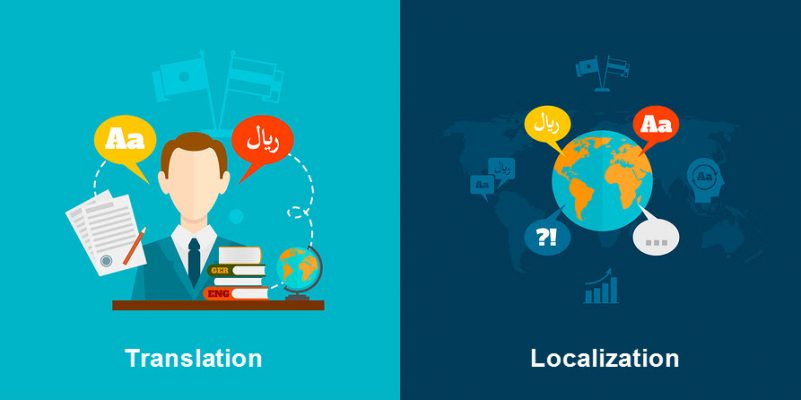For many regular people, translation is something they take for granted, or don’t even think about at all. If they don’t work with translators directly themselves, people often have no idea of what translation actually involves or what different types of translation are there. In today’s article, we’ll take a more detailed look at one particular language profession, closely connected with translation: language localization.
If you want to find out what it takes to be a translator and what other language professions are there, check out our previous articles.
What is localization
Language localization is the process of making a text or any other language material (audio, video) more suitable for a particular country or area. It is most frequently used to adapt different types of multimedia content: websites, software, video games.
Localization often involves translation, but it is a much more complex process. Here are some examples of what else can be a part of localization:
- Addressing cultural, historical, economic, and other references
- Taking into account local regulations, laws, and legal requirements
- Changing dates, addresses, phone numbers, etc. to the appropriate local format
- Converting to local currencies and units of measure
- Modifying the content to suit the tastes and consumption habits of local markets
- Changing images, icons, colors, and more to fit the local tastes and culture
Localization vs translation
Localization and translation often go hand in hand, but they are not the same process.
Translation is possible without localization. For instance, you can translate a text from American English to Spanish without converting Fahrenheit to Celsius, or feet to meters.
The opposite — localization without translation — is also possible. When people speak varieties of the same language that are quite distinct (British vs. American English, Brazilian vs. European Portuguese, etc.).
How can language localization benefit your business
In general, localization makes content more understandable for consumers. For example, there are no confusing references or images, no need to convert anything into local units of measure.
Nowadays, if you want to expand your e-commerce or any other business to a new overseas market (or sometimes even a new region in your country), localization is not an option — it is a must. In the modern hi-tech world, your content is the face of your business, and localization makes it a friendly one for the new market.
Here are a few examples of how localization can benefit your business:
- It makes entering a new market easier. Language and cultural barriers are some of the hardest to overcome when entering a new market. Proper localization of your website, advertising campaign, and other content will do most of the job of removing them.
- It increases customer satisfaction. Localization helps avoid any confusion that can be caused by unfamiliar references or foreign units of measure. It also shows your commitment to your new customers. Localizing all parts of the consumer journey, including payment methods and customer support, makes it easier for customers to make a decision. And, it also makes them more likely to choose your business over others.
- It reduces risk. Culture is a tricky aspect, and certain things acceptable in one culture can be unacceptable or even insulting in another. Not knowing the local culture doesn’t excuse you when you make such a mistake and can cost you your reputation. Proper localization helps avoid that.
- It increases revenue. By making your product or service more accessible to local consumers, you make them more likely to buy it. This will, of course, result in sales growth. Good localization is not cheap, but it is a worthwhile investment that will pay for itself in the long run.
For more on this subject — come back next week!

